VIKING
Published by the Penguin Group
Penguin Group (USA) LLC
375 Hudson Street
New York, New York 10014

USA | Canada | UK | Ireland | Australia | New Zealand | India | South Africa | China
penguin.com
A Penguin Random House Company
First published by Viking Penguin, a member of Penguin Group (USA) LLC, 2014
Copyright 2014 by Jenifer Ringer-Fayette
Penguin supports copyright. Copyright fuels creativity, encourages diverse voices, promotes free speech, and creates a vibrant culture. Thank you for buying an authorized edition of this book and for complying with copyright laws by not reproducing, scanning, or distributing any part of it in any form without permission. You are supporting writers and allowing Penguin to continue to publish books for every reader.
Photograph credits appear .
LIBRARY OF CONGRESS CATALOGING-IN-PUBLICATION DATA
Ringer, Jenifer.
Dancing through it : my journey in the ballet / Jenifer Ringer.
pages cm
Includes index.
ISBN 978-0-698-15150-5
1. Ringer, Jenifer. 2. BallerinasUnited StatesBiography. 3. New York City Ballet.
I. Title.
GV1785.R484A3 2014
792.802'8092dc23
[B]
2013036975
Penguin is committed to publishing works of quality and integrity. In that spirit, we are proud to offer this book to our readers; however, the story, the experiences, and the words are the authors alone.
Version_1
To Mom and Dad, my encouragers and prayer warriors
To Becky, my sister and best friend
To Grace and Luke, my precious lights
To James, my husband and hero

CONTENTS

Prologue
 T here is a ballet that is like an ocean: it seems to stretch beyond the horizons of the stage. No matter how many times I see or dance this ballet, George Balanchines Serenade, I always find something new to discover, something so beautiful that I wonder if the audience should laugh or cry.
T here is a ballet that is like an ocean: it seems to stretch beyond the horizons of the stage. No matter how many times I see or dance this ballet, George Balanchines Serenade, I always find something new to discover, something so beautiful that I wonder if the audience should laugh or cry.
When the curtain opens, it reveals seventeen women grouped in two diamonds that touch at one central tip. They wear long, light blue tulle skirts that blow softly in the breeze stirred by the curtain as it rises up from the stage. There is a dim blue light that makes the dancers seem like indistinct angels. They each have one hand raised toward the front corner of the stage, where the light is the brightest, as if they are shielding their eyes from a divine glow. As the orchestra begins to play Tchaikovskys quiet strings, the dancers slowly begin to move, each placing the wrist of her upraised hand against her temple as she turns her face away from the light. The movement and music build from there.
Soon, dancers are rushing on and off the stage, and key figures emerge: one woman, tall and statuesque; another, smaller, dancing quickly with light leaps; there will eventually be a third, the Waltz Girl, who comes in many measures later, finds love with a strong young man, but then loses him when the wind sweeps him and the rest of the women offstage. At the end of the third movement, this last woman falls to the ground, alone.
Then, though nothing visible changes on the stage, it seems that now the dancers are in some land in between heaven and earth. The tall woman, the Dark Angel, enters, hair down, leading a new man to the fallen Waltz Girl. The Dark Angel shields the mans eyes, as if they have traveled through lands that he is not allowed to see. He picks up the Waltz Girl, encouraging her to stand again.
The man dances in this hinterland with the three main women, all of them reaching and yearning for something they cannot quite grasp. Eventually, the Waltz Girl falls to the ground and cannot get up again. The Dark Angel covers the mans eyes, and takes him away.
Six angels come, awakening the Waltz Girl once more. A motherly figure, flanked by three men, appears, and the Waltz Girl runs to her, embracing her and then once more sinking to her knees. The three men lift the Waltz Girl first to her feet and then even higher to stand on their shoulders. Finally, accompanied by the flock of angels, the men carry their fragile burden toward a new, brighter light that beckons to them from offstage. The Waltz Girl reaches for the light and then opens her arms, leading with her heart as she flies up to the heavens.
If I were to distill into one event what made me want to dance, I would say that dancing in Serenade was what ultimately led me to a career in ballet. Though I tiptoed through my childhood, often prancing instead of walking and locking myself in my room to dance wildly to disco music, I always thought of ballet as my hobby, my after-school activity. Even as I had successes at my ballet schools and got caught up in making myself the perfect ballerina, I always figured that after high school I would go to college, get a job, and get married, like regular people.
But when I was fourteen and a student at the Washington School of Ballet, the Washington Ballet was performing Serenade at the Kennedy Center and needed some of the advanced students to fill in the corps de ballet. I was one of the four students chosen. The moment I heard the music and began to learn steps that fit the music so well that they seemed inevitable, I knew my life had been changed. This was dancing. This felt completely right. If I were not allowed to dance these steps to this music, something would always be missing from my life. And there was a moment during my first performance of Serenade that was like a light taking up residence in my chest.
I did become a professional ballerina, but six years after all of my dreams came true, I found myself trapped inside them. I had been a bright and talented sixteen-year-old when the New York City Ballet offered me the chance to join its elite corps de ballet, one of the four girls chosen that year out of a country of talented teenagers. At twenty-one, I was promoted to soloist, an even greater achievement. To the outside world, I appeared to be one of those successful young people who would have an amazing career in a specialized world experienced by only the lucky few.
But the public saw only my upward trajectory as I went from one featured role to the next, slowly gaining the confidence and experience that might one day earn me the ultimate prize: principal dancer rank. Few noticed my absences from the stage during the times that I battled injuries, normal enough occurrences in the life of every elite athlete, and no one knew about my eating disorders. No one knew that I alternated between anorexia and compulsive overeating, completely unable to control my relationship with food. When I was in the phase of my cycle in which I under-ate, my weight for ballet was good, and I was onstage dancing almost every night. I took a weird pleasure in the bones showing through my skin. When I was in the overeating phase, I would slowly start gaining weight, which caused me to panic and grow paranoid as I imagined critical looks aimed in my direction.

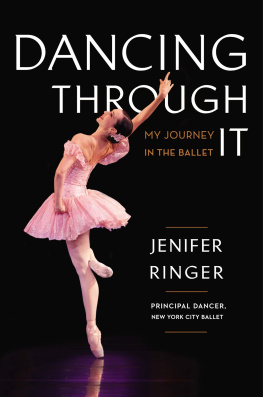

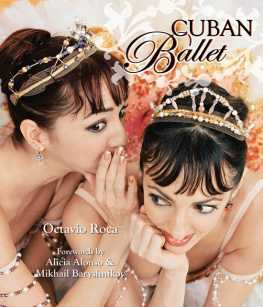
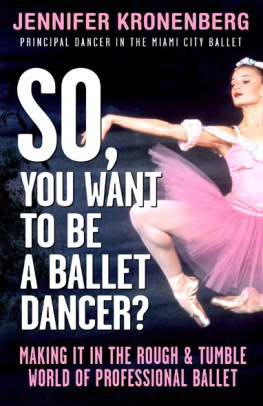
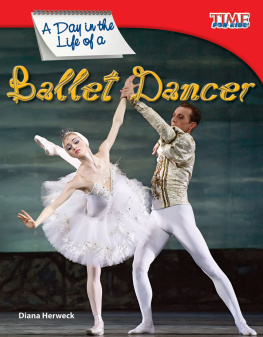
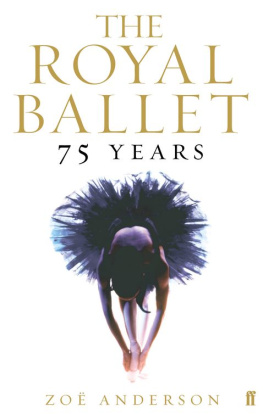
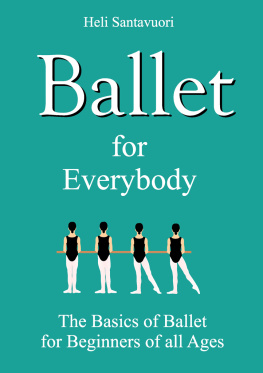
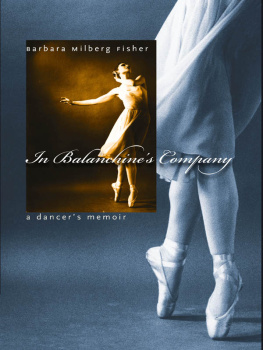
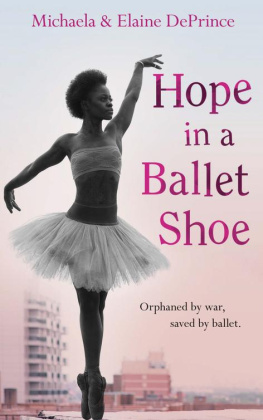

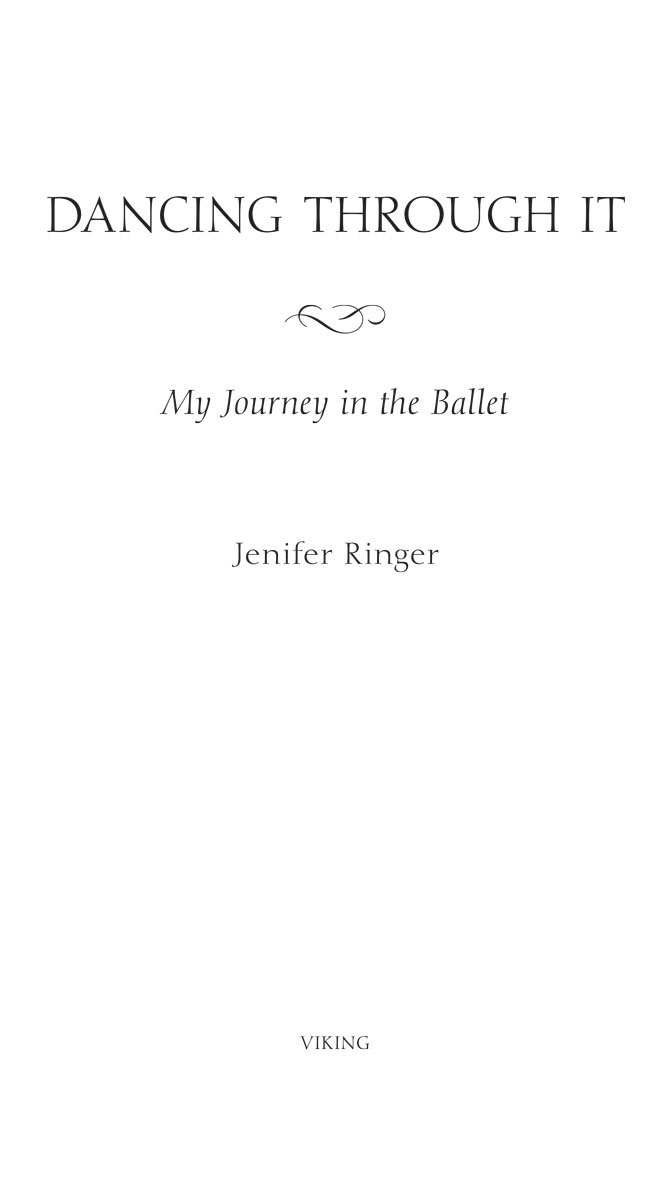



 T here is a ballet that is like an ocean: it seems to stretch beyond the horizons of the stage. No matter how many times I see or dance this ballet, George Balanchines Serenade, I always find something new to discover, something so beautiful that I wonder if the audience should laugh or cry.
T here is a ballet that is like an ocean: it seems to stretch beyond the horizons of the stage. No matter how many times I see or dance this ballet, George Balanchines Serenade, I always find something new to discover, something so beautiful that I wonder if the audience should laugh or cry.